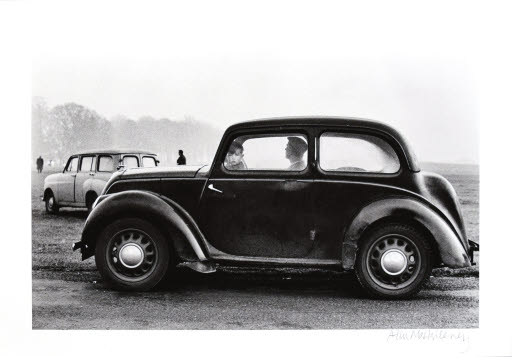Out for a Drive, Father and Son, Phoenix Park, Dublin

Alen MacWeeney (b. 1939 Dublin, Ireland), Out for a Drive, Father and Son, Phoenix Park, Dublin, 1963, Archival pigment print, Gift offer from Henry Daas 2020.35.10
The Davis recently received a gift of eleven photographs by Irish photographer Alen MacWeeney. Born in Dublin in 1939, MacWeeney left Ireland at the age of 21 to work with fashion photographer Richard Avedon in his New York and Paris studios. He returned home five years later, purchased a 35mm Leica, and left the studio to take photographs on the streets of Dublin. In the early 1960s, he formulated the style of street photography for which he is best known, and photographed two of his most famous series, Yeats and Irish Travellers, which both document people and places unique to Ireland. MacWeeney further developed his focus on the human and quotidian in his 1970s and 1980s photographs of the New York City subway, capturing dynamic images of the riders and train cars in panoramic diptychs. His work is in institutions and collections worldwide, including the Metropolitan Museum of Art, the Museum of Modern Art, and the Art Institute of Chicago.
The eleven gifted photographs were taken in Dublin between 1963 and 1965, when MacWeeney first began capturing images outside of the studio. The beautifully composed black and white images depict daily life—walking the dog, children swimming, vendors pushing carts of vegetables, a father and son out for a drive—and are cropped to focus in on the action, as if the viewer happened upon the scene while walking down the street. Out for a Drive, Father and Son, Phoenix Park, Dublin illustrates the immediacy of the artist’s approach, as the father looks to the right, his attention captured by the road or something just beyond the frame, while a young boy looks intently at the camera, seeming to lock eyes with the viewer. Emblematic of MacWeeney’s style, Out for a Drive not only captures a specific moment and place, but reaches beyond the camera to create a human connection between subject and viewer.